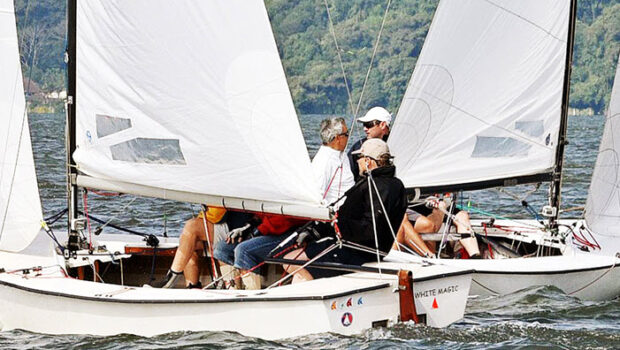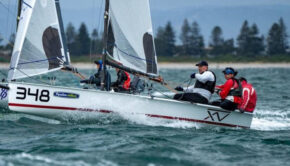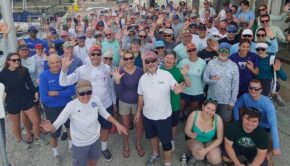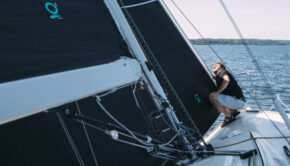Work together toward a common goal
Published on October 9th, 2023
As a tribute to Hale Walcoff, who recently died, we share a report he had written for the Lightning Class on crew communication:
Bruce Burton and I were sailing for Tufts in the intercollegiate North Americans. In the seventh race we rounded the weather mark first and jibed onto port, closely followed by Ed Adams of URI. Converging with us from to leeward was Washington’s Brian Thomas, still beating to the weather mark on starboard. Bruce didn’t see him until we were one boatlength away and by then it was too late.
As we were doing a 720, Bruce said, “Hale, you have to tell me about these things.” “I would have,” I replied, “but I thought you saw him coming.” What was potentially a good race – one that in retrospect would have won the NAs for us – became a disaster because of a lack of communication.
We all engage in pre-regatta boat and physical preparation, but equally important is preparing to communicate. So before you rush out on the water and have a communication breakdown, think about the following ideas. First, when assembling a crew, remember that you don’t need Arnold Schwarzenegger to hike or Gary Jobson to call the shots–you just need a compatible crew that will work together toward a common goal.
The amount of talent you need will be determined by the type of boat you sail. For instance, a J/24 is difficult to steer precisely in waves and has a large genoa that restricts visibility, so the helmsman must concentrate totally on steering and rely on the crew to tell him or her what is going on. Conversely, an Etchells is easy to sail upwind and only uses a working jib, so the skipper can afford to look around part of the time without losing boatspeed. – Full report









 We’ll keep your information safe.
We’ll keep your information safe.